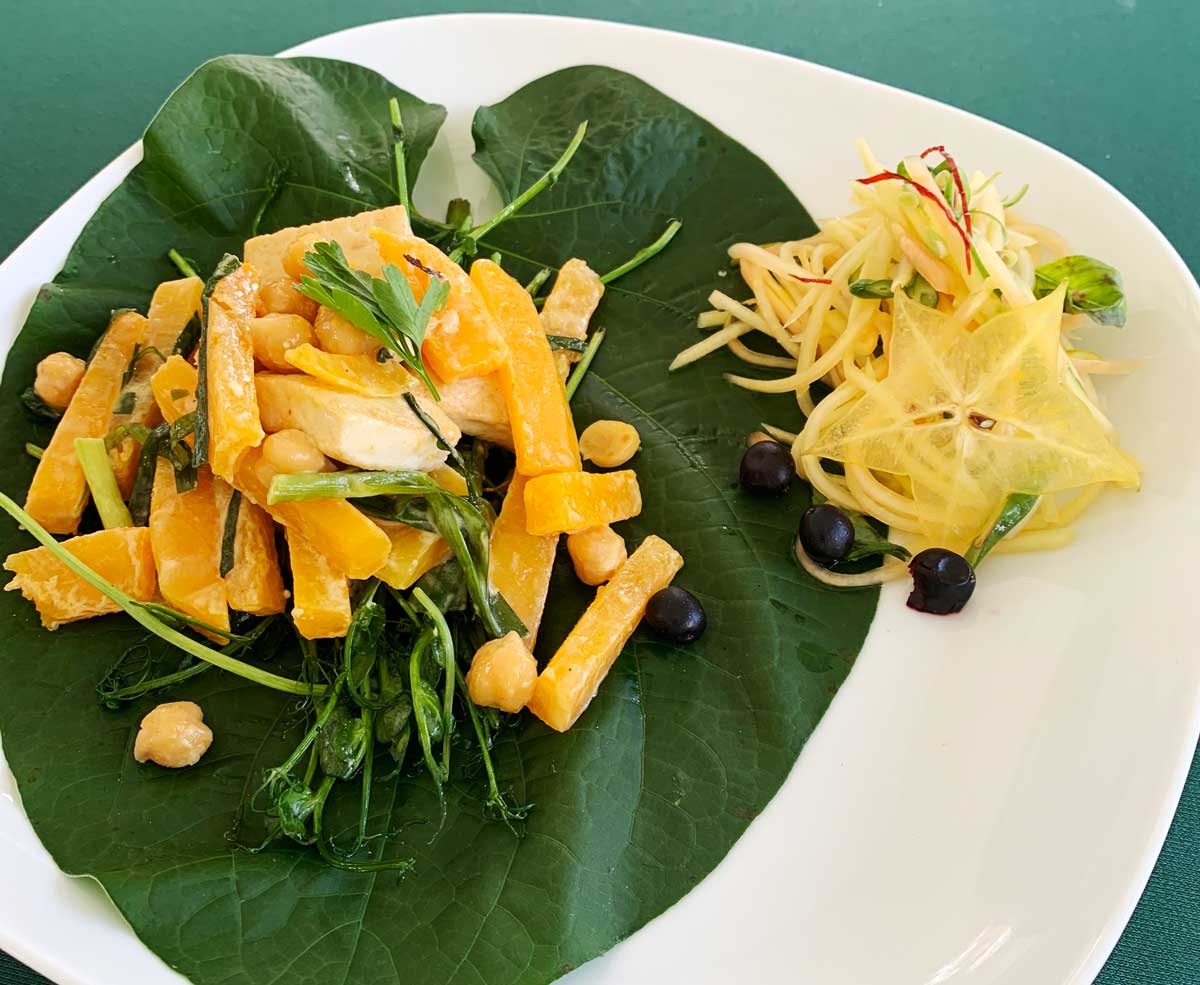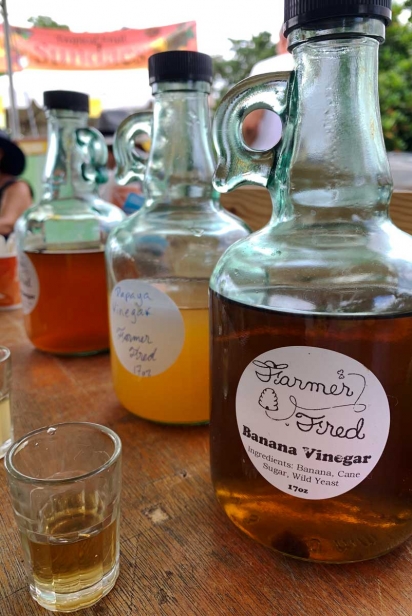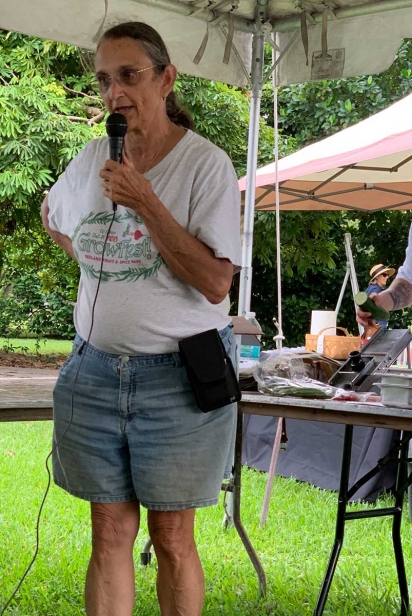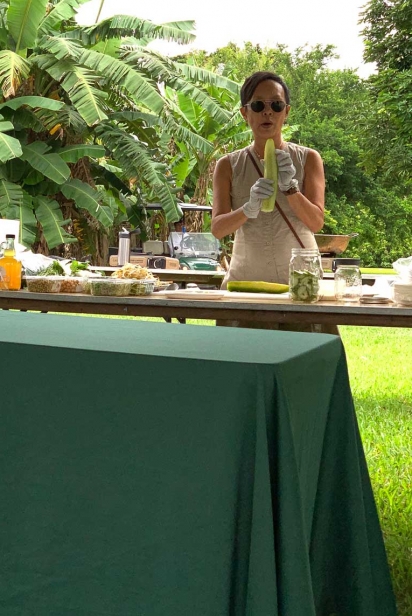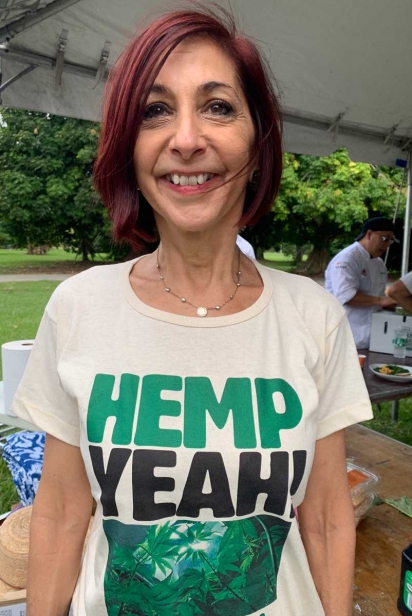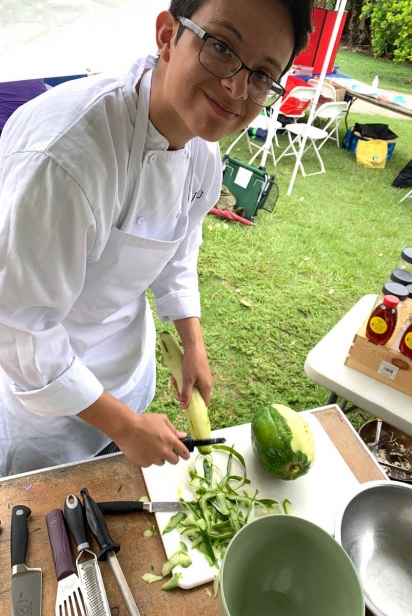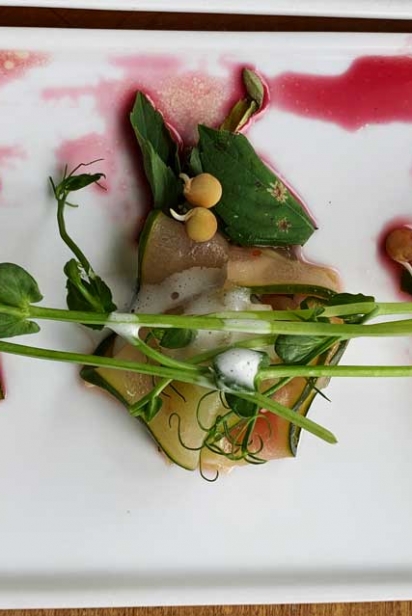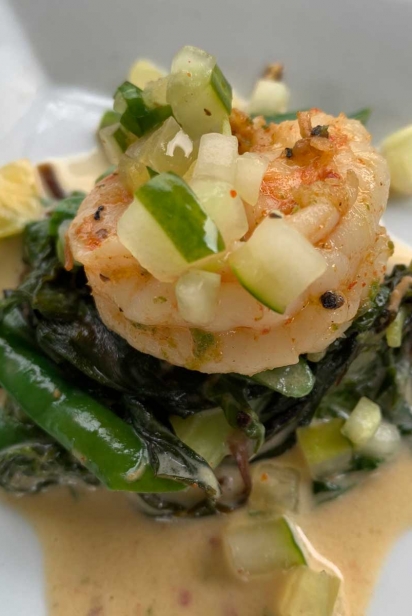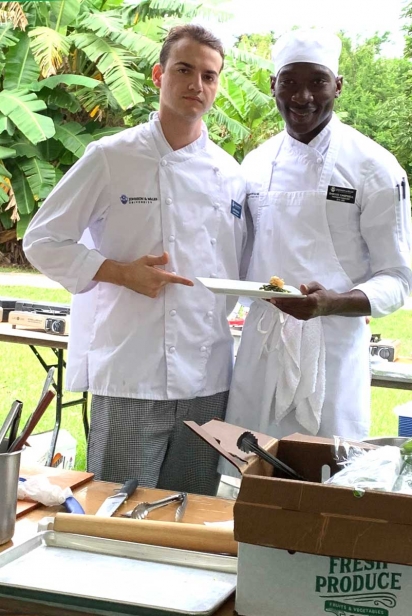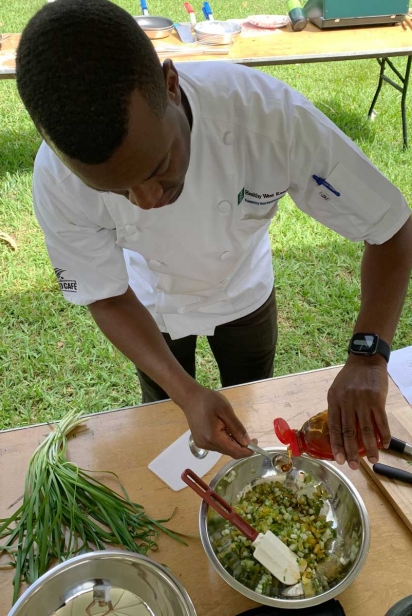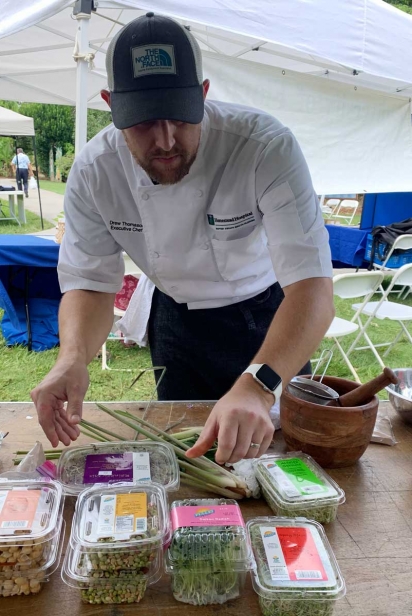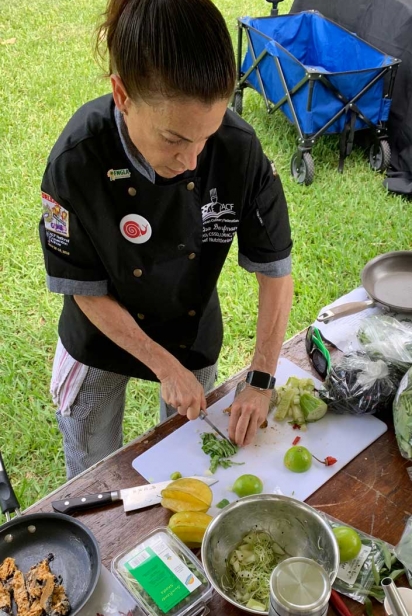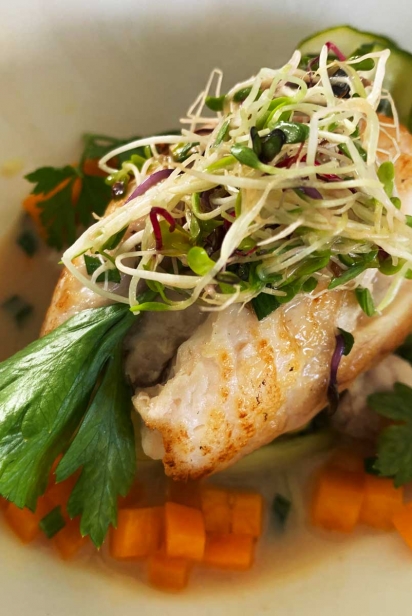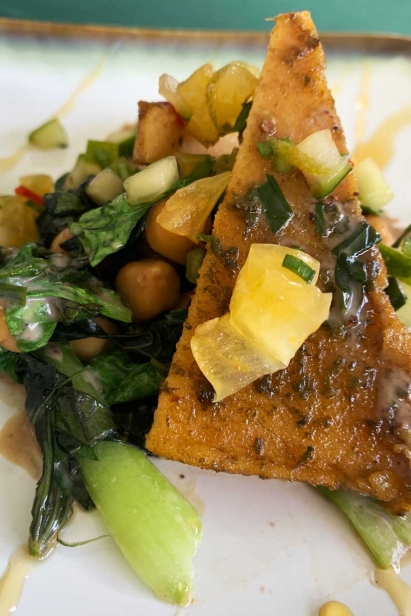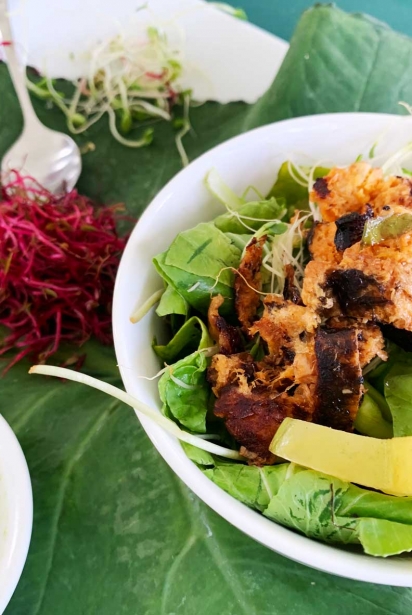Taking the Local Cooking Challenge at GrowFest
For chefs both amateur and professional, making a special dish in 60 minutes under the blazing sun is a daunting task. Throw in a mystery box of local ingredients like katuk, hoja santa, antidesma and betel leaf, and the heat is on.
At the annual GrowFest at Redland Fruit and Spice Park, one of the highlights is the local cookoff for amateurs (Saturday) and pros (Sunday). The "Chopped"-style competition is a especially tough because of the freshly harvested ingredients chefs discover when they open their box. It's too early in the season in South Florida for better-known produce, like tomatoes or eggplant; instead, fall fruits and veggies include green papaya, starfruit and butternut squash; lemongrass; sweet potato leaves; curry leaf; and garlic chives. "This is the low part of the season," says GrowFest organizer Margie Pikarsky. "We have more tropical things. You gotta embrace the ingredients."
For the competition, chefs use what's in the box along with products from the pantry, including Farmer Fred's banana, guava and papaya vinegars, a variety of sprouts from Fullei Fresh; local honey; Florida Keys sea salt, and non-local staples like olive oil and flour. Each contestant or team is allowed to bring one secret ingredient.
Secret to Success
"Think outside the box and inside your backyard," advised Thi Squire of GROW2Heal Garden at Homestead Hospital.
For Saturday's amateur chef cookoff, contestants were Thomas Catuna and Renee Valery Catuna and culinary students from Johnson and Wales: Diego Aloy working solo; the team of Luke Pidduck and Darius Campbell; and Nathan Solkowitz and Angel Roman-Villalobos. Their professor, chef Barbara Kamp, was on hand to watch her students at work.
Contestants were judged on the appearance of their dish, their use of local products and, of course, taste. In the amateur cookoff, top honors went to Luke Pidduck and Darius Campbell, whose shrimp dish was inspired by their Trinidadian heritage.
Pro Chefs Square Off
Sunday's professional competition brought together chef Johnson Teh of Lan Pan Asian and Ramen-Ya; Drew Thomason of Homestead Hospital; Rod Knight of West Kendall Baptist Hospital; and Lisa Dorfman, a nutritionist and dietitian who is also active in Slow Food Miami.
Their secret ingredients ranged from fish sauce (nam pla) to yellowtail to Adashah, a plant-based lentil product.
Chef Teh's squash with spicy green papaya salad was chosen the winner by judges Tyra Phillips, executive director of the Dade Farm Bureau; guava farmer Jorge Zaldivar of Rare Fruit Council International; and chef Chantelle Sookram of Urban Oasis Project.
While chefs cooked, the audience got a chance to learn more about the ingredients in the boxes, some of which are not readily available in the marketplace. "They might be growing in your backyard," says Squire.
What's in the Box?
Some of the more unusual ingredients chefs discovered in their boxes included:
Antidesma (Antidesma bunius), also known as bignay, tart berries typically used to make wine and preserves
Curry leaf (Murraya koenigii), aromatic leaves used in South Asian cooking
Garlic chives (Allium tuberosum), oniony greens popular in China and South Asia
Hoja santa (Piper auritum) or Mexican pepper leaf, an aromatic member of the pepper family
Sweet potato leaves (Ipomoea batatas), the nutritious green part of the sweet potato plant


